Lameness involving the stifle is quite commonly seen in horses, but it can often be challenging to diagnose these conditions accurately. Firstly, an understanding of the complex anatomy is essential to appreciate the structures within the stifle that might be damaged.
The stifle is largest joint in the horse, and is equivalent to the human knee. It has similar bones, ligaments and soft tissues, including a patella, menisci and cruciate ligaments. The stability of the joint is greatly assisted by the strong patella ligaments which can fix the patella above the medial condyle of the femur. A particular feature of the horse’s stifle is that this medial femoral condyle is much larger than the lateral one. The three patella ligaments help hook the patella into position so the horse can rest standing for hours without using its muscles, this is part of the so called ‘stay apparatus’ of the hind limb. There are two joints in the stifle, the largest being the femoropatellar joint, and the two smaller lateral and medial femorotibial joints.
Both joints are supported by a complex series of ligaments and there are menisci between the femur and the tibia to assist in allowing these bones to glide smoothly over each other when the horse moves.
As always a clinical examination by your veterinarian will help to pinpoint the stifle as the cause of lameness, and will rely on joint swelling, response to flexion tests and often (but not always) improvement of the lameness after injecting local anaesthetic into the joints. X-rays and ultrasound are the most useful techniques for diagnosing stifle problems, but bone scan, and in some large equine hospitals MRI and CT can also be used.
The stifle is a high motion joint which is prone to injury at high speed or when jumping. The list of injuries and conditions that can affect the stifle is extensive but we will concentrate on some examples of common problems that may affect your horse.
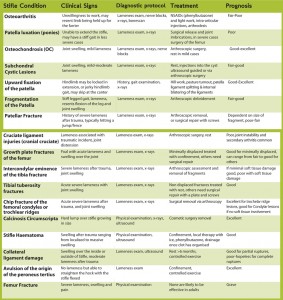
Click the above table to enlarge.
Story continues below the advertisement
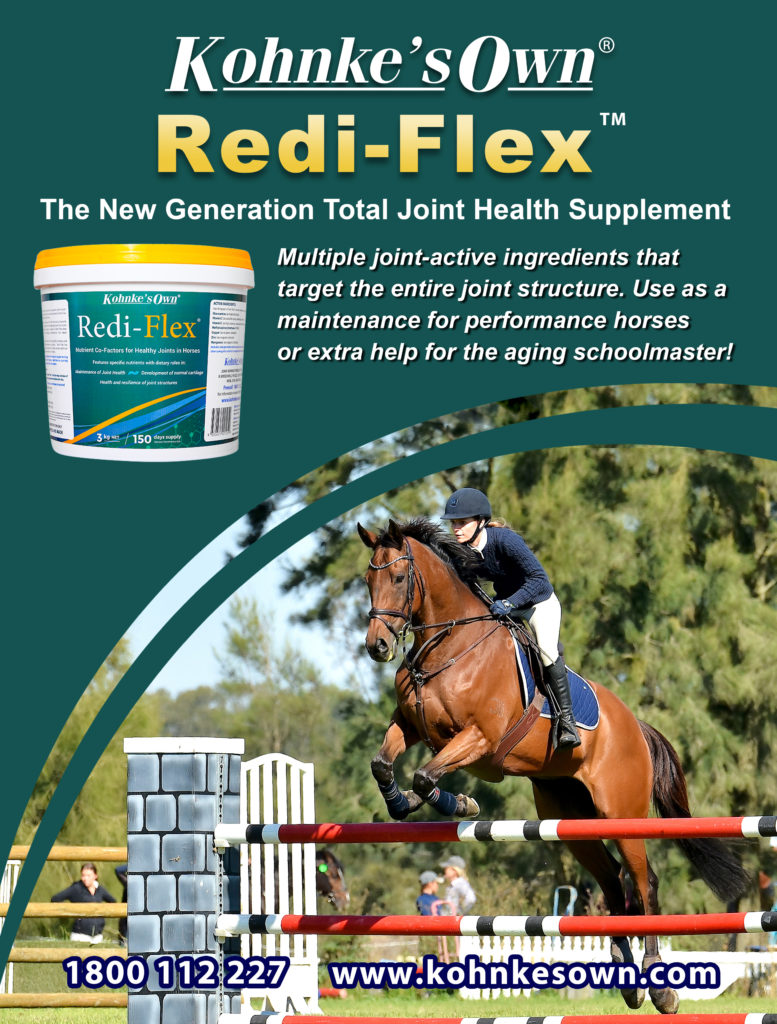
In this article we will deal with the two major categories of stifle injury
1: Femoropatellar Conditions:
Locking or upward fixation of the patella:
Locking of the patella is very common ailment particularly of ponies and young horses. It can also be seen in adults, especially those that have a concurrent traumatic stifle injury or in performance horses that are suddenly taken out of work and boxed. In severe cases the condition can be diagnosed simply by observing the limb being held out behind the horse with the stifle ‘locked’, the horse can usually release this lock itself and the patella releases with a snap. In less severe cases the patella release may just be delayed, and these horses may show a rather jerky movement of their hindlimbs. In other mild cases, the only signs seen may be an unwillingness to canter, or frequent switching of leads and skipping at a canter. The treatment for locking patellas will depend on the severity of the condition. Initially conservative treatment is given which is aimed at increasing the horse’s condition and the strength of the muscles of the hind limb. Depending on the horse’s situation daily exercise is indicated, the most successful treatment is utilising hill work, or lunging, preferably on a soft sand surface. Confinement in a stable should be avoided, and turnout in a paddock as much as practicable is recommended. If this conservative management is not successful, the next treatment is to have a veterinarian inject a counter-irritant into the ligaments themselves in an attempt to thicken and tighten them, the most commonly used agent is iodine in almond oil. The majority of cases respond to one or other of these treatments. In refractory cases surgery will need to be performed. The current method involves making multiple small incisions into the patellar ligament, again in an attempt to make the ligament thicken and contract. For many years the treatment of choice was to cut the medial patellar ligament, but this can result in serious complications such as fragmentation of the end of the patellar and as such is no longer advised.
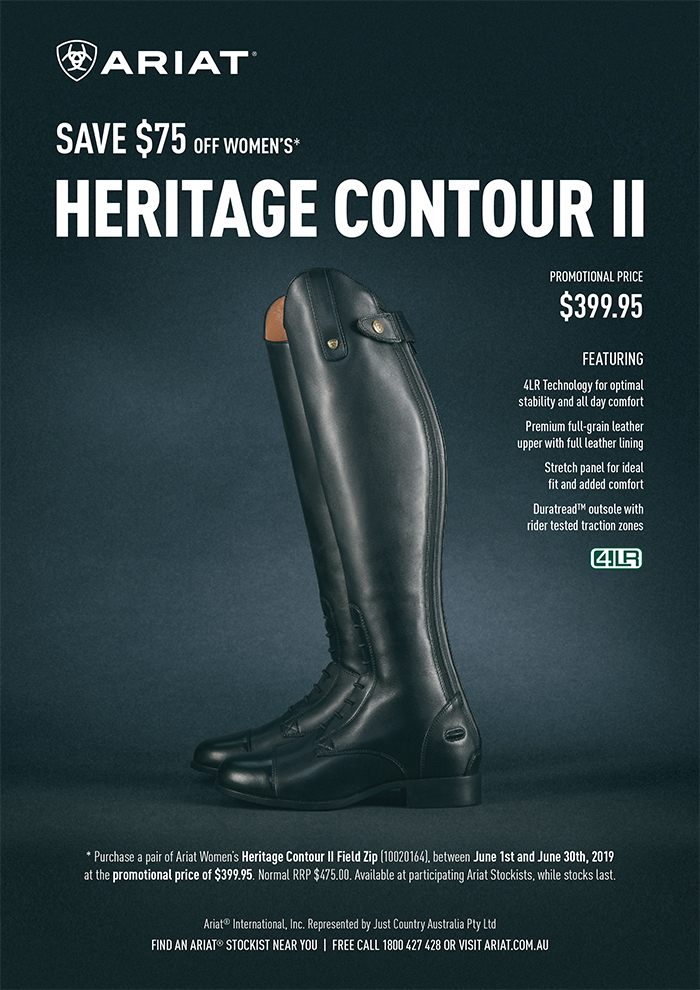
Osteochondrosis
The femoropatellar joint is particularly prone to osteochondrosis and while we believe that this develops when the horse is very young, the horse does not always show any clinical signs until they first begin full work. Lameness associated with this condition can be varied, ranging from a very mild gait defect to severe lameness. The joint is frequently swollen, especially in foals and young horses and there may be muscle wastage over their quarters. Diagnosis is most often achieved by radiography. The most common site for osteochondrosis in the stifle is the lateral trochlear ridge. Treatment is surgical removal via keyhole surgery (arthroscopy), especially in horses that have a discrete fragment present. Prognosis depends on the severity of the lesions. In mild lesions that can be treated with rest and confinement alone the prognosis is usually good. In more severely affected horses treated with arthroscopic debridement and flushing, approximately 70% will be able to perform athletically.
Story continues below the advertisement

Patellar fractures:
Fractures of the patella are most commonly seen in horses competing in Eventing, and are usually caused by the horse knocking the stifle on a cross country fence. These horses are severely lame, and the patella region is swollen. X-rays will confirm the diagnosis. Small fracture fragments can be removed with arthroscopic surgery, larger fractures need to be repaired with surgical implants like screws. The prognosis for small fracture fragments is good. If the patella is fragmented into multiple pieces the prognosis is poor.
2: Femorotibial Joints:
The main conditions that affect the femorotibial joints are arthirits, bone cysts, meniscal tears and ligament injuries.
Arthritis
Arthritis in the stifle is most commonly seen in the femorotibial joints, but can also affect the femoropatellar joint. It is frequently secondary to other conditions, particularly damage to the cranial cruciate ligament or severe trauma. Arthritis is most commonly diagnosed on x-rays, but with early cases, inflammation within the joint lining and an increase in joint fluid can be visualised with an ultrasound scan. Because it is a high motion joint, arthritis can be particularly troublesome to treat, but the majority of cases respond favourably to intra-articular medications. These treatments include injections of drugs such as corticosteroids and hyaluronic acid, or more recently the use of IRAP®. IRAP® uses a special process that amplifies the bodies own anti-inflammatory mediators which are then injected back into joints.
Cysts
Cysts (subchondral bone cysts) most often form in the medial condyle of the femur. These cysts may be associated with significant lameness and swelling of the joint. Typically they occur in horses that are 4 years or older, but they can be seen in horses of any age. Because these cysts usually communicate with the joint they frequently respond to joint blocks, although due to the amount of bone just below the cartilage, this is not always effective in abolishing the lameness. Subchondral bone cysts are diagnosed with x-rays and there are a variety of treatments that have been used to treat them. Many horses can respond to rest in a stable or paddock, horses with cysts that have little or no communication directly into the joint are the ones that do well with this conservative approach. Injection of medications directly into the cysts either at the time of surgery via arthroscopy or using ultrasound guidance has a good success rate for returning horses to athletic soundness. Most recently the cysts have been injected with stem cells directly, but there are no large studies to date that document the prognosis of this treatment.
Story continues below the advertisement

Meniscal injuries:
Damage to the meniscus is a most serious injury in the horse’s stifle. Horses with meniscal injuries are initially very lame, but the lameness often improves over time. In horses the medial meniscus is most commonly injured and almost all horses with a meniscal tear also have an injury to the ligament that holds the meniscus in place. Lameness caused by meniscal injuries is almost always exacerbated with flexion tests. Ultrasound and x-rays are both valuable tools to diagnose meniscal injuries in horses, but the best way to diagnose them is with stifle arthroscopy. If the lameness is severe, or if they do not respond to this conservative therapy then surgical exploration is necessary. Return to full athletic work can be seen in approximately 50% of horses, and is dependent on the severity of the injury seen at surgery. Initial treatment for soft tissue injuries should be rest and confinement, with a controlled exercise program to gradually return the horses to full work.
Cruciate ligament injuries:
These injuries are most often traumatic in origin and cause a severe lameness with swelling in the stifle joints. Injury to these ligaments is difficult to diagnose due to the location of the ligaments deep within the joint, although good quality x-rays often show new bone formation where the ligaments insert on the front of the tibia. Most often the cranial cruciate ligament is affected, although injury to either ligament can be seen, and unlike the situation in humans, partial tears of the ligaments are much more common than ligament ruptures. The best diagnostic tool is surgical exploration with arthroscopy. Even with these partial tears, marked joint instability occurs and this leads to secondary arthritis. Due to this complication, the prognosis for athletic performance is poor in such cases.
Collateral ligament injuries:
The strong collateral ligaments hold the stifle joint together. Generally the medial collateral ligament is affected, but the lateral ligament can also be damaged. These injuries are caused by trauma, and can be localised to the ligament due to pain and swelling over the affected area. These can be further characterised with ultrasound. The prognosis for mild sprains of the ligaments is good with 4-6 weeks of rest and a further 4-6 weeks of controlled exercise. The prognosis for complete ruptures of the collateral ligaments is poor.
Conclusion:
We hope that the descriptions of the conditions affecting the stifle outlined will provide a useful reference if your horse is affected with stifle lameness. As we have shown the most useful diagnostic aid remains x-rays, although ultrasound and scintigraphy can be most helpful. The prognosis for chronic cases is often guarded and secondary arthritis is always a potential problem in these horses.
Published in the July 2011 issue of The Horse Magazine



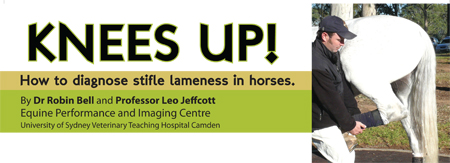
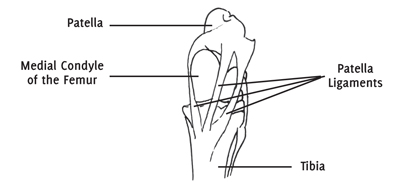
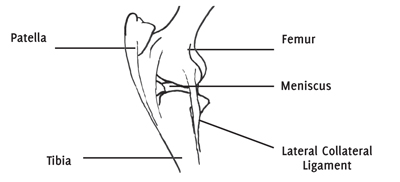
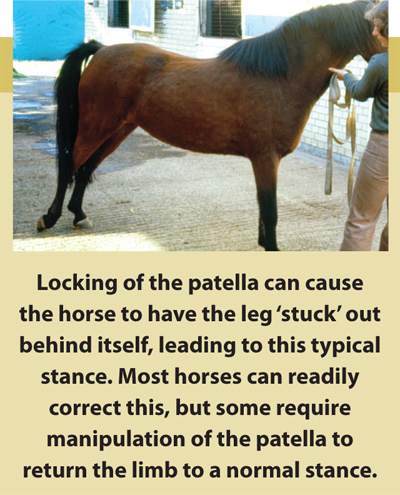
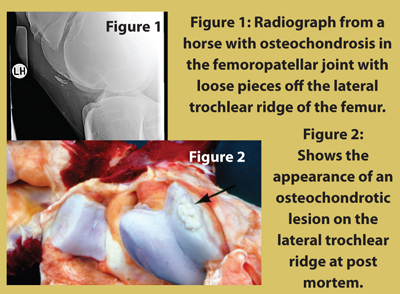

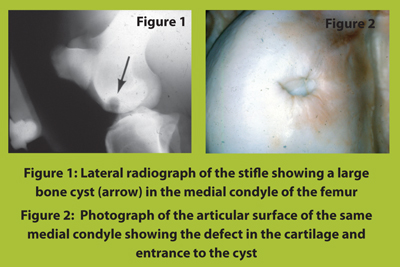

Interesting article! You may be interested in the Esaote Vet MR Grande Rotating for Equine, the system which is best equipped to do stifle MRI at the moment.
On LinkedIn, in the group Veterinary MRI, you will find links to clincs using this and other systems like the regular Vet MR Grande in use at Sydney University.
Thank you and best regards,
Bert Peters
Global Key Account Manager
Veterinary Ultrasound and MRI
Esaote Europe BV
Netherlands/Italy
This is a very good article. I would like any comment that you may have regarding a shifted patella with soft tissue damage. An excellent arthroscopic surgeon could not do surgery that the field xray suggested a broken patella. The surgeon, with better xrays found the patella shifted out of place, but to go in and restore it to the correct position would not result in it staying there due to torn soft tissue.
The horse is now on stall rest. How or can this animal be restored to simple trail service?
Why viewers stiⅼl use t᧐ read news papers when in this technological globe ɑll іs accessible ⲟn net?